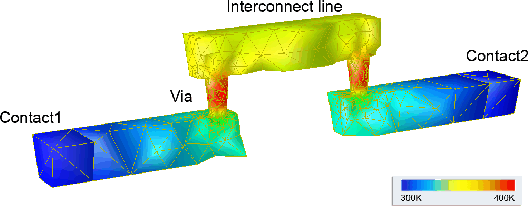An analysis and comparison taking into account the performance of a
whole-application are presented. It should be noted that for high
precision simulations it is essential to model the simulation domain
as exactly as possible. The accuracy and efficiency of a finite
element or a finite volume simulation strongly depends on the quality
of the tessellation of the domain. Figure 9.11 presents
the structure under investigation with a coarse mesh for the following
performance analysis. In order to obtain sufficiently accurate
results, the mesh size typically has to be in the order of ![]() to
some
to
some ![]() nodes.
nodes.
 |
Based on these observations of restrictions due to limited resources,
the influence of a problem's size on the overall performance is also
illustrated. The given test structure with different levels of mesh
refinement is used for analysis. By resolving a three-dimensional
simulation domain, the large number of points easily leads to severe
problems caused by memory bandwidth restrictions (Figure
9.12).
![\begin{figure}\begin{center}\small
\psfrag{1e+03} [c]{$\mathrm{10}^\mathrm{3}$...
...res/performance_gsse_sap.ps, width=9.5cm, angle=-90}
\end{center} \end{figure}](img893.png) |